The period of time that followed the previous update has been tense in every sense of the word. The expectedly increased autumn arrivals, combined with the Greek state policy of caging the migrants on the islands, have brought back to life images of living hell in the detention centres of the islands. Local racist and fascist voices, freed from the “compassionate” gaze of summer visitors, found once more the time and place to impose on public space. Local authorities decided to reshuffle the deck, claiming the major political benefits that they could extract from the situation. Two new deaths were added to the already long list of deaths in the detention centres on the island. At the same time, once more, there were some migrants who, defying threats and repression, stood tall.
The situation in Lesvos and detention centres
Moria’s detention centre keeps surprising us with just how much worse it can get. In the end of November there were more 7,500 people waiting in Moria, when the facilities of the centre are suitable for accommodating just 2,500. As a result, thousands ended up staying in summer and makeshift tents, even in the fields around the centre, at a time when rain, heavy winds and low temperatures had begun. The food provided is minimal and really bad, forcing most of the migrants to try and cook on their own on makeshift stoves. Hygiene conditions are deplorable, with about 30 shared toilets in an abject state to be used by almost everyone, and with access to water and electricity often limited to just a few hours per day. The people who stay there still face serious security issues, with frequent violent outbreaks, and the centre’s police forces leaving helpless attack victims without taking any kind of precaution[1]. All this amplifies the feeling of desperation that is shared by most of them, all in the uncertainty concerning the process of their asylum applications. Applications that are being processed extremely slowly, with negative decisions being issued most of the time. The migrants’ main hope is that they will be granted “vulnerability status”, so that they can either be moved to the Kara Tepe camp which helps decompress Moria’s detention centre, or, at best, have their geographical restrictions for the island lifted off, so that they can be moved to mainland Greece.
At the end of November, under the pressure caused by the widespread publication of footage in local, national and international media, the ministry announced a programme for the “decongestion” of the island by 3000 migrants. A “decongestion” that goes on very slowly, but also does not take into account neither the actual capacity of the camp in terms of infrastructure nor the expected new arrivals. At the same time, new containers are moved to the center “to replace tents” without any provision for the rest of the necessary living infrastructure. Containers which the mayor, in a crescendo of ridiculousness and cheap politicking, tried to prevent from being placed in the center[2]. Indicative, however, of the government’s intention to intensify the war against the arriving migrants, is the statement of the minister himself that cynically comes to announce new deaths that will be added to the previous 13[3], as well as the creation of new camps like Moria’s[4]. The same is true of the forthcoming change in asylum-seeking legislation that will reduce asylum seekers’ rights and speed up their deportation[5].
Changes have also happened regarding the way that asylum applications are being examined. Following the European Asylum Support Office (EASO), the Greek Asylum Service has also moved away from Moria. Both services have been transferred to offices in the area of Pagani Mitilini, far from the Moria detention center. Migrants going through the interview process are transferred to the new offices by bus. It must be reminded that asylum offices were the main protest sites due to delays in dealing with requests and the mass negative decisions they take.
Deportation Centre
Inside the Moria Hot Spot is the deportation (“pre-removal”) center known as “Section B”, which is under the responsibility of the Greek police operates. This sector operates like a prison, with detainees being allowed outside the container-cells just for an hour a day, having their personal items removed and with the communication with the outside world being restricted. In this prison, with a capacity of 200 people, people are not being prosecuted for having committed a criminal offense, but rather as migrants who have received rejections to their applications for protection status and cannot or are not informed of the possibility of appealing against these decisions. In recent months, however, its use has also been extended to the preventive detention of new arrivals by reintroducing an old policy for the management of migrant populations that had been interrupted in recent years. The choice is made on the basis of national criteria, since it includes migrants coming from countries where the European average rate of any protection status is below 33%[6]. Since October, this provision has also begun to encompass the adult Syrian men, creating a further exception within the existing one. The direct imprisonment in this wing after the migrants’ arrival on the island places particular pressure on the prisoners. The messages from the state about what they should expect for the future are clear, leading them to further devaluation and resignation, forcing many to sign the “voluntary” returns paper from IOM.
Unaccompanied Minors’ Section – 20th November Revolt
At the southern entrance of the hot spot is the section of unaccompanied minors with a capacity of about 200 youngsters. In this, under the supervision of cops and NGOs, about 300 children are awaiting their transfer to some hostels in the city of Mytilene or in mainland Greece. However, due to insufficient capacity, many minors are forced to sleep outside the section, which poses serious issues for their safety. Questions also arise regarding the methods of recognizing the “childhood” of many children, with arbitrary methods of age verification used (e.g. dental examinations), which eventually exclude a large proportion of them who are registered as adults. Following the events of April last year (2016), minors from this “secured” section have ensured that they can come in and out from it by using an identification card. However, their entrapment on the island, and the accumulated pressure they feel often leads to reactions. The culmination of these reactions was the small revolt that took place at dawn on Monday 20th November. About 300 minors, during a three-hour period, attacked and broke down whatever reminded them of the condition of devaluation that they are experiencing. The cops arrested 7 of them with charges of arson, disruption of common peace, provocation of pronounced damage, attempted bodily harm, and resistance. Seven of the minors went through a prosecutor and faced restrictive conditions. At the same time, however, a special penitentiary regime operates within the wing by the administration of the center. Minors who have “created problems” within the ward are expelled from the director of Moria’s detention center and are forced to stay in the hot spot among adults. For the housing of unaccompanied minors, but also for minors under 13, a new safe zone has been created since the end of November on the northern side of the center but has not yet been put into operation.
Deportations
Meanwhile, deportations continue at an increasing rate. Deportations happen in two ways: either as purportedly “readmissions” under the EU-Turkey Agreement, where migrants are being deported to Turkey, or as deportations through the International Organization for Migration (IOM) “voluntary returns” program, where migrants are forced to sign their repatriation papers and then transferred back to their countries of origin.
In the first case, Lesvos is used as the deportation center for all the islands of the eastern Aegean, with “readmissions” taking place almost every week. Apart from the issues raised from the recognition of Turkey as a safe country for the return of migrants, there are many times when the Greek authorities have deported migrants who had serious medical problems or had submitted appeals in administrative courts against the rejection decisions that the asylum office had issued. The lack of legal advice and assistance, as well as the serious financial costs that come with these procedures for most migrants, leave them unprotected against the arbitrary operations of the Greek authorities. Until 7 December 2017, 1876 people have been deported to Turkey[7]!
IOM’s procedures under the guise of “voluntary signing” constitute the second important pole of deportations that take place. Migrants who are trapped in the islands, the Greek territory and the pre-removal centers have to choose between the continuing devaluation and humiliation they are experiencing or the signing of the acceptance of their deportation. They are actually being called upon to decide between their imprisonment and detention under miserable conditions and ultimately their deportation, even to third countries, or the waiving of asylum procedures and their deportation back to their countries of origin. An important aspect of this system is that migrants signing these papers waive the right to seek asylum in Europe for at least five years! IOM comes also to offer them “financial support” for their decision. A lot of migrants end up getting on these return flights in the hope that they will be able to try again to reach Europe, next time avoiding their arrest and detention. IOM flights are made via the Athens airport, with airplanes that often carry deportees from other European countries. According to the information posted on the pages of the relevant ministry, a total of 1979 people have been deported by this route since the implementation of the EU-Turkey Joint Declaration[8].
Local Reactions – Mayor’s Office General Strike
Same as every year, reactions from the racist and conservative parts of the city and the surrounding villages were rebuilt and appeared during this period. The “peaceful period” of the summer months, during which the promotion of the tourist-compatible image of the “tolerant island of solidarity” is preferred, has come to an end, allowing the racist mob to take out its axes. A series of fake news along with the display of offending behaviours of migrants which took on a racist hue created fertile ground for the pervasive anti-immigration attack that followed[9]. Through the social media networks of the local racist riffraff repeated calls for attacks on migrants have been made, some of which apparently fulfilled. Local commercial and business associations offered themselves as the official bodies for adopting the racist demands and eventually took on a central role in attacks against migrants, such as those that took place on 21 and 22 November in Sappho Square[10].
At the same time, the police authorities scare most migrants through continuous checks, assaults and beatings, in order to prevent them from descending to the city, while allowing the reproduction of problematic conditions (such as drug dealing) which are then used in the construction of the “dangerous migrant” image. An image that is vital for creating social acceptance and consensus to the state of exception which entraps migrants in detention centers on the islands as well as in the rest of Greece, but also for the establishment of a totalitarian regime of control and surveillance of the public space.
At a formal institutional level, local authorities seemed to play the card of “poor Moria conditions” to claim the island’s “decongestion” but also for rewarding benefits. A “decongestion” that comes under the mantle of removing migrants from the overcrowded detention center of Moria to unknown places in Greece and through deportations, which also found support in wider political and “humanitarian” groups than the traditional ones. The island’s municipal authorities are reported to be in conflict with the ministry of migration about the number of migrants that is agreed to be held in the island, although the mayor comes from the political party (ANEL) which is the coalition partner of SYRIZA in government. This is why the municipality is very cautious whenever they express the demand for “decongestion”: it clearly refers to moving people away from Lesvos, but of course not to the closure of the detention center and the loss of the economic and political privileges that this would bring.
In this climate, the municipality of the island called a ‘general strike’ on Monday, November 20th. In this way, the expected central attack on migrants also found its official call. A call that included the far-right parts of the city as well as charitable NGOs and clubs (eg Synyparksi, Agkalia) who rushed to the square. Directly relevant to the call’s characteristics was the fact that the announcement of the date of the gathering was made by the deputy mayor of Mytilene, while he was standing between the police officers who protested about their working conditions outside the Moria Camp (sic). The gathering point for the “protest” of the municipality, Sappho Square, was the same place where an “annoying” migrant struggle was taking place over the previous month for the “opening” of the islands and their release from them. It is the same point that a week earlier, the other Deputy Mayor of Mytilene, tried to “clean up” from the migrants by attacking them and destroying their banners of protest[11]. The Mayor’s war call found a direct response. For the next two days after the strike, a host of shop owners and “indignant” residents attacked the migrants who were trying to continue their protest at Sappho Square. The institutional cover offered to them for these attacks was renewed a few days ago through the report that the municipality has filed against any person responsible for the situation on the island, announcing among other things that there is “… a risk of committing criminal offenses, in order to defend their lives and property on behalf of the indigenous people of the island … “[12].
Sappho square demonstration – Occupation of SYRIZA offices
After the repression that followed the July events, the resistance on the part of migrants was very limited. Although the conditions have continued to deteriorate, counterinsurgency suppression of those days seems to continue to hold them back until today. Perhaps the most significant exception to this was the struggle that was given by migrants mainly from Iran and Afghanistan for two months at Sappho Square and the occupied offices of the local organization of SYRIZA. A protest that began on October 20, against the wretched living conditions in Moria’s detention center, demanding its closure and the freedom of movement of migrants away from the islands. Participants in this protest may have diminished in the first few days after the intervention of a cluster of actors and authorities, but they succeeded in bringing together a major struggle, overcoming all the barriers of invisibility that there were built around them[13]. A struggle that, beyond the contradictions it presented near the end, was able to secure the satisfaction of a large part of the demands that were made.
However, this struggle also leaves behind interesting lessons of the widening forms of repression, particularly in the field of migration. Beyond the known tactics of police and fascist repression by violent means, as well as the media propaganda which tried to misdirect the public from the real demands of the struggle, more things became apparent. The role of NGOs as counterinsurgent players against those who refuse to go through the mediation limits they have made, became clear in at least two cases. For example, we saw the director of NGO “Iliakhtida”, which has acquired a monopoly in hostels and apartments for housing migrants on the island, to attend the negotiations with the protesting migrants (taking up the role of a SYRIZA member), and be confronted by two of the migrants staying in the NGO’s apartments, causing them serious concerns about the continuation of their housing. But we also saw the representative of the prominent Lesvos Solidarity organization, “former PIKPA camps”, responding to the government call and making public declarations of loyalty directed against the struggle that was given, by reproducing the governmental vulgar rhetoric of a privileged struggle – statements that were aimed at undermining the struggle that was being given and marginalizing it from the solidarity world[14].
Moves have also been made against the part of the solidarity people in an attempt to isolate the protesting migrants. A “cultural” club evicted the Lesvos Labor Club from their joint offices because of the latter’s decision to house some of the struggling migrants due to bad weather while the protest was taking place in Sappho Square[15]. The presence of plain clothes police during the protest in the square, and in the early days around the occupied offices, was constant with repeated verification of identity of the world approaching the area. At the same time, a local informational blog of SYRIZA had been targeting two of the supporters that took part in the negotiations by publishing their photos and their social media account details.
North-africans’ demonstration in Sappho Square
Due to the problems caused by this protest, and through the racist call from the mayor’s office, a new doctrine dictating that there is no room for migrants’ protests in the public space of Mytilene is trying to be established. In fact, this was made clear just a few days after the previously mentioned struggle left from Sappho Square. When 25 people, mostly North Africans, went to repeat the previously set example of protesting in the square and calling for the removal of the geographical restrictions, there was an immediate mobilization of the police, who in the end arrested 14 people for illegal camping! The fact that there weren’t event tents in place did not pose an obstacle to the repression of the new protest by the municipality, police and judicial authorities[16].
The court of the 35+2 (#freethemoria35)
Meanwhile, the preliminary investigation of the 18 July events where 35 migrants were brought to trial was completed. Two more people were arrested in August in which a new case file was drawn up for the events of that day. However, the two cases are expected to be joined and tried together. Thirty of the persecuted immigrants continue to be jailed in four different prisons in the country (Korydallos, Avlona, Chios, Malandrinos), with their custody being extended for another 6 months after a new decision by the judicial council of Mytilene. The final verdict is reported to have been completed and sent to the prosecutor for the final procedures and the definition of the lawsuit. The court is expected to take place some time in the spring.
Killing of Habibi
However another important aspect about the migrant issue came to light through a murder case in a neighboring village of Mytilene. On Sunday, November 26, Habibi from Afghanistan was stabbed to death in the village of Pamfila, a few kilometers outside Mytilene and Moria’s detention center. As it turned out, Habibi was killed by another Afghan, after a fight they had as Habibi took advantage of him and others by hiring them for rural jobs to locals. This practice is widespread, especially at the time of the collection of olives, where migrants who are trapped and economically depleted on the island are the necessary cheap labor force. Often the mediation is undertaken by compatriots who have stayed longer on the island and are aware of the networks, where they arrange the amount of their payments by holding a percentage for themselves. Habibi had rented rooms even from the church to house the workers. It is characteristic, however, of the attempt to conceal this aspect, that while the very fact of the murder was strongly shown at the beginning with the necessary racist references, after the reasons behind the murder came out, the news disappeared from the headlines that it adorned up to that point.
The period that follows is expected to be just as difficult. On the one hand the anticipated worsening weather conditions that will find the trapped migrants without the necessary means of protection raise serious concerns about new victims. On the other hand, a pressure from the Greek authorities to build new “closed-type” detention centers and an increase in deportations is also expected. At the same time, the “migrant issue” will continue to be used as the means of imposing a state of exemption on the island that will target, beyond migrants, its own inhabitants. The horizontal, grass-root and self-organized struggles will continue to be the most important obstacle against the rise of the state of fear and social cannibalism.
Musaferat
January 2018
[1] https://musaferat.espivblogs.net/2017/11/15/gia_thn_plateia_sapfous/
[2] http://www.emprosnet.gr/koinonia/afksanontai-oi-mnistires-gia-to-pikpa
[3] http://ergatikilesxilesvou.blogspot.gr/2017/11/blog-post.html
[4] https://noborderkitchenlesvos.noblogs.org/post/2017/12/08/14-protesters-detained-and-in-danger-of-deportation-for-putting-imaginary-tents-on-saphous-square/
[1] https://www.hrw.org/news/2017/12/15/greece-dire-risks-women-asylum-seekers
[2] http://www.emprosnet.gr/prosfyges/kai-ksana-blokarisma-se-konteiner
[3] https://musaferat.espivblogs.net/2017/10/23/neos_thanatos_kai_diamartyries_metanastwn/
[4] http://www.kathimerini.gr/938239/article/epikairothta/ellada/moyzalas-den-apokleiw-to-endexomeno-na-ypar3oyn-8anatoi-apo-to-kryo-sth-moria
[5] http://www.kathimerini.gr/939567/article/epikairothta/ellada/anamorfwnetai-h-nomo8esia-gia-to-asylo
[6] http://ec.europa.eu/eurostat/statistics-explained/index.php/File:First_instance_decisions_by_outcome_and_recognition_rates,_3rd_quarter_2017.png
[7] http://mindigital.gr/index.php/45-eidiki-grammateia-epikoinoniakis-diaxeirisis-kriseon/prosfygiko-zitima-20/1778-7-2
[8] http://mindigital.gr/index.php/45-eidiki-grammateia-epikoinoniakis-diaxeirisis-kriseon/prosfygiko-zitima-20/1778-7-2
[9] https://racistcrimeswatch.wordpress.com/
[10] https://musaferat.espivblogs.net/2017/11/23/syntomo_enhmerwtiko_22-11/
[11] https://musaferat.espivblogs.net/2017/12/01/%cf%8c%cf%84%ce%b1%ce%bd-%cf%84%ce%b1-%ce%b1%cf%86%ce%b5%ce%bd%cf%84%ce%b9%ce%ba%ce%ac-%ce%bc%ce%b9%ce%bb%ce%bf%cf%8d%ce%bd-%ce%b3%ce%b9%ce%b1-%cf%80%cf%8c%ce%bb%ce%b5%ce%bc%ce%bf-%ce%b1/
[12] http://www.kathimerini.gr/940077/article/epikairothta/ellada/mhnysh-kata-pantos-ypey8ynoy-apo-ton-dhmarxo-lesvoy-gia-thn-katastash-sth-moria
[13] https://musaferat.espivblogs.net/2017/11/15/gia_thn_plateia_sapfous/
[14] http://www.emprosnet.gr/koinonia/afksanontai-oi-mnistires-gia-to-pikpa
[15] http://ergatikilesxilesvou.blogspot.gr/2017/11/blog-post.html
[16] https://noborderkitchenlesvos.noblogs.org/post/2017/12/08/14-protesters-detained-and-in-danger-of-deportation-for-putting-imaginary-tents-on-saphous-square/














































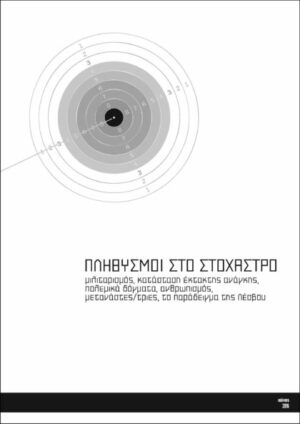
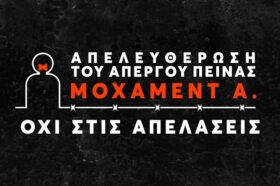
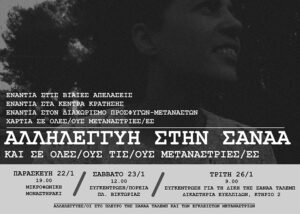
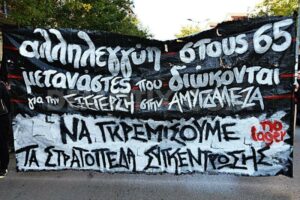
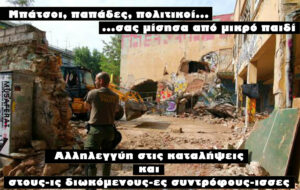
1 pings
[…] in Lesvos continues to be widely reported on and denounced by refugees and migrants, solidarity activists, the media, and human rights organizations. In response to this pressure, in November and December […]